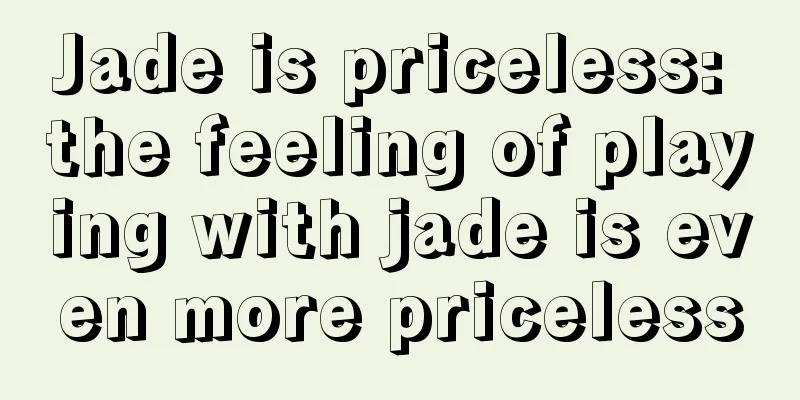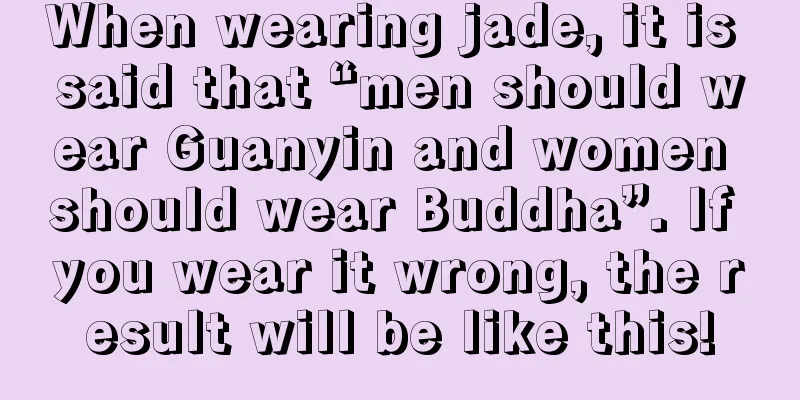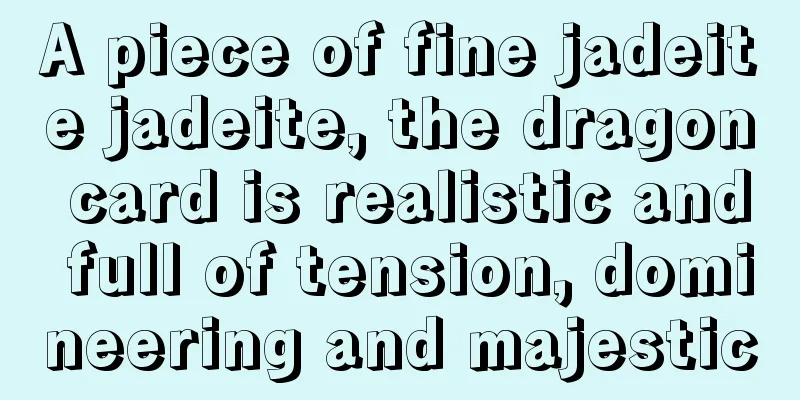Are all jades without the “orange peel effect” fake?

|
Many people are concerned about the authenticity of jadeite. There are also many articles online that use the presence of orange peel texture to identify the authenticity of jadeite. What is the orange peel texture in jadeite? Is jade without orange peel patterns necessarily fake? Let's hear what Cuixuan Yipin has to say? Due to the different hardness of jade's columnar and fibrous crystals, orange peel patterns occur, similar to wrinkles on jade. High-hardness crystals are raised, while low-hardness crystals are sunken. This unique phenomenon is called the orange peel effect, which is also the basis for judging the quality of jade. The orange peel effect is obvious in jadeite with a rough texture, while the orange peel effect rarely appears in icy and glutinous jadeite. It can basically be judged that the orange peel effect is almost real jade. The obviousness of the orange peel effect can be used as a basis for identifying the quality of jadeite. For example, glass-type and ice-type jade are jades with better quality, and it is difficult to see the "orange peel effect", while the "orange peel effect" is easily seen in bean-type jade. To observe whether jade has orange peel patterns, we can place the jade on a polished surface and observe it through reflection. We will see depressions and bumps of different sizes and directions similar to orange peel. The orange peel effect is particularly prominent in natural A-grade jade. Because A-grade is pure natural jade, observing its orange peel effect is one of the important bases for identifying A-grade jade. Jade can identify structural characteristics based on the size and shape of the orange peel, and can accurately distinguish between similar jade and counterfeit products. One is the nature of jadeite’s structure. The larger the jade grains, the softer the composition, and the more obvious the orange peel effect. On the contrary, the smaller the jade particles and the tighter the combination, the more obvious the orange peel effect. The orange peel effect is a unique phenomenon on the surface of jade. Its obviousness can be used as a basis for judging the coarseness of jade crystals. When observed through reflection, A-grade jadeite will show the same raised or sunken surface as orange peel. This is the orange peel effect of A-grade jadeite. But we must pay attention: the jade with orange peel effect must be A-grade jade, but not all A-grade jade has this effect. Whether the orange peel effect is obvious depends on the size, shape, arrangement and surface polish of the jade particles. In fact, many people who know about jade judge its authenticity based on the orange peel effect. Orange peel texture is a manifestation of natural jade. B-grade jade may occasionally have it, but it is very rare and does not have the natural look. It is easy to see if you look closely. It should be noted that the "orange peel effect" can only be seen in artificially polished jade products, while the "orange peel effect" will not appear in jade products polished by vibration machines.
feicuibbs feicuibbs9 |
<<: What is celadon jadeite? Did you know?
>>: Be wary of what the jade industry calls the "Heavenly Fairy Picture"!
Recommend
Black Jade has a unique beauty and low-key luxury
In my country's jade market, black jadeite is...
Jade is divided into five grades, only the first three are worth collecting
Gold has a price but jade is priceless. Buying ja...
How do you know if it is good jade?
1. Color elements First of all, we need to judge ...
How to identify the authenticity of jadeite, absolutely useful information
When it comes to jadeite, everyone may be familia...
Is it enough as long as the raw materials are good? See how carving technology affects jade prices!
We often say that a good piece of jade must be of...
What’s the good of a bare square jade pendant? It was sold for 100 million!
In the jade world, there is a type of jade that l...
What are the reference factors that determine the value of jadeite?
After purchasing a jade treasure, the first thing...
To identify the authenticity of jadeite, use these 3 tips
Jade is not only beautiful, but also has high col...
The core of the jade bracelet is carved with a dragonfly brand full of vitality, so beautiful!
Today I would like to share with you The process ...
What is the relationship between blue water jade and oily green jade?
Oily green jadeite and blue water jadeite can be ...
What are the meanings of the common jade string beans?
Jade string beans are also one of the common them...
Jade bracelets will soon become scrapped if not maintained. What are some ways to maintain bracelets?
Jade jewelry has been loved and favored by young ...
Show a more refined self, these jade jewelry can not be worn casually
There are many types of jade jewelry, the most co...
How to identify the authenticity of jadeite, absolutely useful information
When it comes to jadeite, everyone may be familia...
Analysis of the causes of jadeite fading
I saw some jade lovers on the Internet saying tha...









